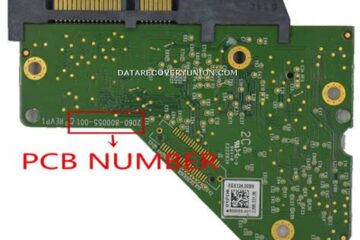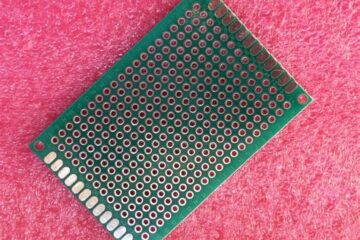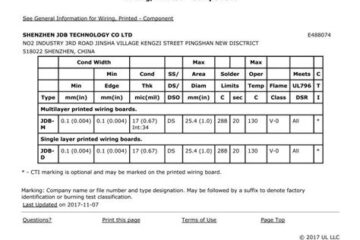Introduction to Solder Mask Material
Solder mask, also known as solder resist or solder stop, is a vital component in the production of printed circuit boards (PCBs). This protective layer is applied to the copper traces of a PCB to prevent short circuits, protect against oxidation, and provide electrical insulation. Solder mask material plays a crucial role in ensuring the reliability and longevity of electronic devices. In this comprehensive article, we will delve into the various aspects of solder mask material, including its composition, types, application methods, and key considerations for PCB designers and manufacturers.
What is Solder Mask?
Solder mask is a thin, protective coating applied to the copper traces of a PCB. Its primary purpose is to prevent solder from adhering to areas where it is not intended, thus preventing short circuits and ensuring proper electrical connections. The solder mask material also serves as an insulating layer, protecting the copper traces from oxidation and environmental factors that could degrade the PCB’s performance over time.
Key Functions of Solder Mask
- Prevents solder bridges and short circuits
- Protects copper traces from oxidation
- Provides electrical insulation
- Enhances the PCB’s aesthetics
- Improves the PCB’s durability and longevity
Composition of Solder Mask Material
Solder mask materials are typically composed of a combination of resins, fillers, and additives. The specific composition varies depending on the type of solder mask and the manufacturer’s proprietary formula. However, the main components of solder mask material include:
Resins
Resins are the primary component of solder mask material, providing the coating’s structural integrity and adhesion to the PCB surface. Common resins used in solder mask include:
- Epoxy
- Acrylic
- Polyurethane
- Polyimide
Fillers
Fillers are added to the solder mask material to improve its physical properties, such as strength, flexibility, and thermal stability. Some common fillers include:
- Silica
- Alumina
- Calcium carbonate
- Barium sulfate
Additives
Additives are incorporated into the solder mask material to enhance specific properties or facilitate the manufacturing process. These may include:
- Pigments for color
- Flame retardants
- Adhesion promoters
- Viscosity modifiers
- UV blockers

Types of Solder Mask
There are several types of solder mask materials available, each with its own unique properties and advantages. The most common types include:
Liquid Photoimageable Solder Mask (LPSM)
LPSM is the most widely used type of solder mask in the PCB industry. It is applied as a liquid coating and then exposed to UV light through a photomask, which hardens the exposed areas while leaving the unexposed areas soluble. The soluble areas are then removed using a developer solution, leaving the desired solder mask pattern on the PCB.
Advantages of LPSM:
– High resolution and accuracy
– Excellent adhesion to the PCB surface
– Good electrical insulation properties
– Wide range of available colors
Dry Film Solder Mask (DFSM)
DFSM is a solid film that is laminated onto the PCB surface using heat and pressure. Like LPSM, it is exposed to UV light through a photomask and developed to create the desired solder mask pattern.
Advantages of DFSM:
– Faster application process compared to LPSM
– More uniform thickness across the PCB
– Better suited for high-volume production
– Excellent chemical resistance
Ink Jet Solder Mask (IJSM)
IJSM is a relatively new technology that uses inkjet printing to apply the solder mask material directly onto the PCB surface. This method allows for precise control over the solder mask pattern and eliminates the need for a photomask.
Advantages of IJSM:
– High precision and resolution
– Faster turnaround times for prototypes and small batches
– Reduced material waste compared to other methods
– Ability to create custom solder mask patterns easily
Solder Mask Application Methods
The application of solder mask material to a PCB can be done using various methods, depending on the type of solder mask and the manufacturing process. The most common application methods include:
Screen Printing
Screen printing is a traditional method for applying liquid solder mask material. A fine mesh screen is used to transfer the solder mask onto the PCB surface, with the desired pattern created by blocking off certain areas of the screen.
Curtain Coating
Curtain coating involves applying a continuous curtain of liquid solder mask material across the PCB surface. The PCB is then passed through a series of rollers to ensure an even coating thickness.
Spray Coating
Spray coating uses a spray gun to apply the liquid solder mask material onto the PCB surface. This method is often used for smaller batches or custom PCB designs.
Lamination
Lamination is used for applying dry film solder mask material. The film is placed on the PCB surface and then subjected to heat and pressure to ensure proper adhesion.
Solder Mask Colors and Their Significance
Solder mask is available in a variety of colors, with each color serving a specific purpose or indicating a certain characteristic of the PCB. The most common solder mask colors and their significance include:
| Color | Significance |
|---|---|
| Green | Most commonly used color, provides good contrast for silkscreen |
| Red | Used for high-voltage or power-related applications |
| Blue | Often used for military or aerospace applications |
| Black | Provides high contrast for component placement and inspection |
| White | Used for LED lighting applications or aesthetic purposes |
| Yellow | Indicates the presence of high-voltage or warning areas |
Designing with Solder Mask in Mind
When designing a PCB, it is essential to consider the solder mask material and its properties to ensure optimal performance and manufacturability. Some key considerations include:
Solder Mask Clearance
Solder mask clearance refers to the space between the edge of a copper pad and the solder mask opening. Adequate clearance is necessary to ensure proper solder joint formation and prevent solder mask from interfering with the soldering process.
Solder Mask Expansion
Solder mask material has a higher coefficient of thermal expansion compared to the PCB substrate. Designers must account for this expansion when determining the size and spacing of solder mask openings to prevent cracking or delamination.
Solder Mask Thickness
The thickness of the solder mask layer can affect the PCB’s electrical properties and the ease of soldering components. Designers should specify the appropriate solder mask thickness based on the PCB’s requirements and the manufacturer’s capabilities.
Solder Mask Compatibility
When selecting components and materials for a PCB, designers must ensure that they are compatible with the chosen solder mask material. Some solder mask materials may not adhere well to certain surface finishes or may react with certain chemicals used in the manufacturing process.
FAQ
- What is the difference between solder mask and silkscreen?
-
Solder mask is a protective coating applied to the copper traces of a PCB, while silkscreen is a printed layer used for text, logos, and component identifiers on the PCB surface.
-
Can solder mask be applied to both sides of a PCB?
-
Yes, solder mask can be applied to both the top and bottom sides of a PCB, depending on the design requirements and manufacturing process.
-
How does solder mask affect the impedance of a PCB?
-
Solder mask material has a dielectric constant that can affect the impedance of the PCB traces. Designers must account for the solder mask’s dielectric constant when calculating impedance and designing controlled impedance traces.
-
Is solder mask required for all PCBs?
-
While solder mask is highly recommended for most PCBs, it is not always required. Some simple, low-density PCBs or those used in low-risk applications may forgo solder mask to reduce costs.
-
Can solder mask be removed or reworked after application?
- Removing or reworking solder mask can be challenging and may damage the underlying copper traces. It is best to ensure the solder mask is applied correctly the first time and to consult with the PCB manufacturer for any necessary rework or modifications.
Conclusion
Solder mask material is a critical component in the production of high-quality, reliable PCBs. By understanding the composition, types, and application methods of solder mask, as well as the key design considerations, PCB designers and manufacturers can ensure optimal performance and longevity for their electronic devices. As technology continues to advance, innovations in solder mask materials and processes will play a crucial role in enabling the development of increasingly complex and demanding PCB designs.



0 Comments